#hemiphractus
Text
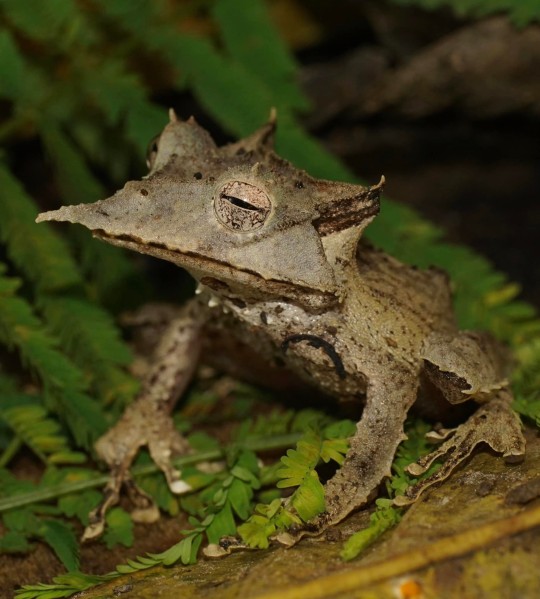

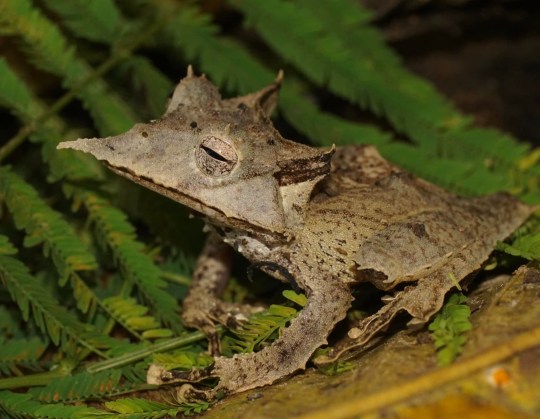
Sumaco Horned Treefrog (Hemiphractus proboscideus), family Hemiphractidae, Loreto, Peru
photographs by Matt Jeppson
15K notes
·
View notes
Note
what's the stupidest/silliest looking frog you know of?
Oh
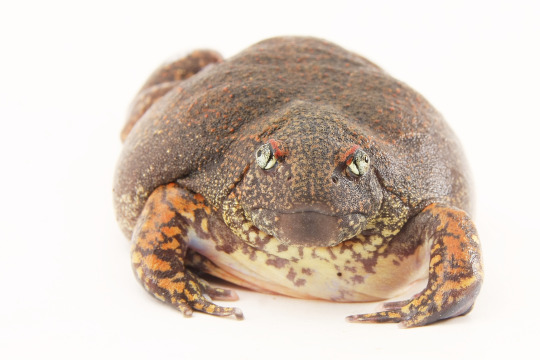
heck

that's
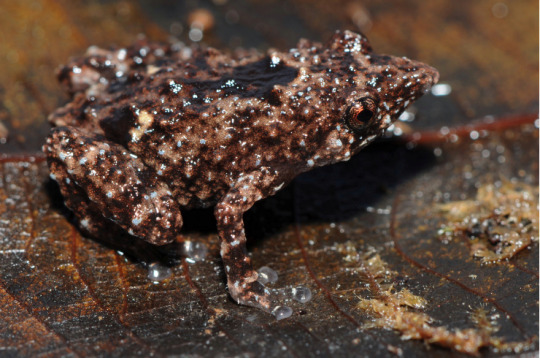
such
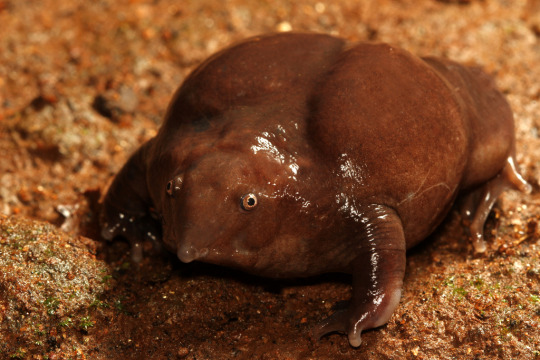
a

great

question

where
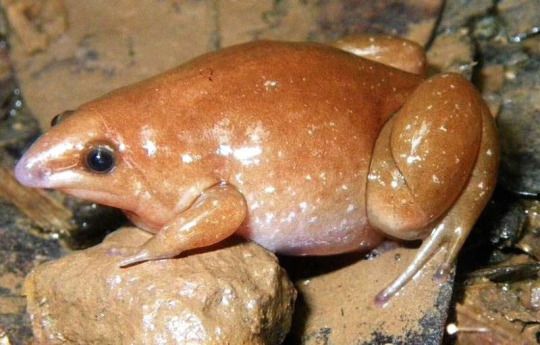
do

I
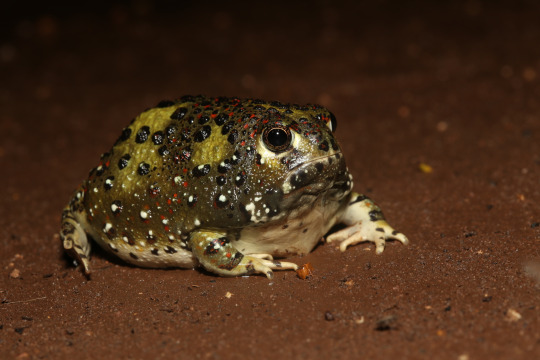
even
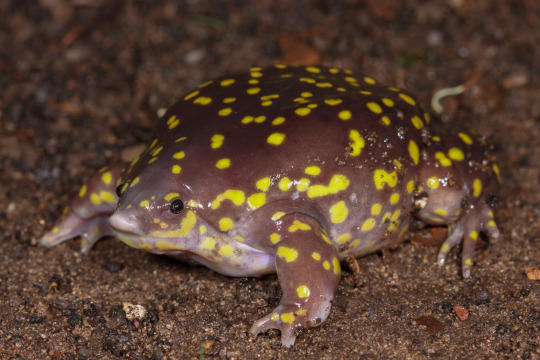
start?

[In order of appearance: Glyphoglossus molossus, Myobatrachus gouldii, Choerophryne proboscidea, Nasikabatrachus sahyadrensis, Pipa pipa, Litoria pinocchio, Triprion petasatus, Synapturanus danta, Breviceps verrucosus, Notaden bennettii, Hemisus guttatus, Hemiphractus bubalus]
#frogs#animals#wildlife#silly#biology#apparently there is a clear formula for a silly or stupid-looking frog#it should (1) be wider than it is long#(2) have something ridiculous going on with its snout#and (3) have bulging or otherwise hilarious eyes#I barely even had to TRY to come up with these goobers off the top of my head#I know for a fact that I missed dozens more weirdos#I mean#to be fair#have you ever really LOOKED at a frog?#like really looked at one?#they're ALL goobers#but also#and I cannot stress this enough#they're good frogs Brent#they're all good frogs
6K notes
·
View notes
Text

Sumaco Horned Treefrog (Hemiphractus proboscideus), family Hemiphractidae, Loreto, Peru. photographs by Matt Jeppson
2 notes
·
View notes
Text

Sumaco Horned Treefrog (Hemiphractus proboscideus), family Hemiphractidae, Loreto, Peru
photographs by Matt Jeppson
0 notes
Text
I’m COMING OVER U better NOT be a hemiphractus proboscideus!
Me:

1 note
·
View note
Photo

Hemiphractus bubalus, source: x
#Anura#Hemiphractidae#Hemiphractus#Hemiphractus bubalus#frog#frogs#animal#animals#biology#nature#wildlife#amphibian#amphibians#zoology#herpetology#herps#fauna#critter#critters
56 notes
·
View notes
Photo

A Spix’s horned toad carries eggs on its back. This photograph was taken by Jasmine Vink, the winner of the wildlife and animal category and overall winner in the Australian Photography’s 2018 Photographer of the Year competition
Photograph: Jasmine Vink/Australian Photography Magazine
(via The week in wildlife – in pictures | Environment | The Guardian)
#Spix's Horned Treefrog#Hemiphractus scutatus#Hemiphractus#Hemiphractinae#Hemiphractidae#Neobatrachia#Anura#Lissamphibia#Amphibia#amphibian#treefrog#frog#eggs#forest#Ecuador
45 notes
·
View notes
Photo



This striking specimen is Hemiphractus fasciatus, also known as the banded horned treefrog. These frogs can be found in northwestern Ecuador and possibly parts of Colombia. They’re a nocturnal species that breeds year-round. They possess a defensive posture in the form of opening their mouths to reveal bright yellow gums. They’re also said to bite readily when provoked. Images by Brad Wilson.
911 notes
·
View notes
Photo

Spix's Horned Treefrog (Hemiphractus scutatus) with babies
97 notes
·
View notes
Text
Frogs Heads Are Bizarre Than You Imagined


Hemiphractus scutatus
Frogs Heads Are Bizarre Than You Imagined
A frogs heads can be smooth on the outside, but it is spiky and weird on the inside. Frogs head or skull looks smooth and rounded on surfaces,
but under the skin of some species and you will find skulls that resemble mythological dragons heads, with spikes, spines and other bone structures.
Scientists recently highlighted the variety of frog skulls as part of new research examining the skull evolution and functions in armored frogs.
In certain frogs, skulls can be of shield-shaped or unusually wide, they can be pocked by grooves or enhanced with pointy bits that can provide some extra safeguard against being killed or eaten, the researchers reported.
Artificial colors in some of those frogs indicate a difference in bone thickness in different skull parts, said lead study author Daniel Paluh, a doctoral candidate in the Department of Biology at the University of Florida.
Read more: https://thegeekz.net
Read the full article
0 notes
Text
These spiky frog skulls look more like dinosaur fossils
Some frogs, like the Anotheca spinosa, developed spikes on their skull to possibly keep away predators. (Edward Stanley/)
Some frogs love the water; some prefer dry land. Some are colored to stick out, some to blend in. There are nearly 5,000 different species of frogs hopping, croaking, and swimming across the Earth of all different shapes and sizes. But one thing that unites most of them is a smooth, simple skull shape, giving them the classic froggy face we’ve all come to recognize.
Yet some frogs have evolved skulls that look more like crazy dinosaur fossils than your average Kermit. A process called hyperossification allows extra layers of bone to grow on parts of their skulls, creating anything from grooves or ridges to bony spikes or fangs.
Researchers have known for a long time about the select groups of amphibians that have these unusual skulls, but it wasn’t previously clear how these subgroups ended up this way. A new study in PNAS has found that not only one branch of frog has a crazy skull—the trait has evolved independently in different families of frogs over two dozen times.
“We found that the trait has evolved over 25 times in the frog tree of life, and is often associated with really extreme shaped skulls,” says author Daniel Paluh, a fourth-year Ph.D. student at the University of Florida. Paluh and his co-authors looked at x-ray scans of 158 species representing all 54 described frog families. They found that very different species shared similar eating or burrowing patterns as well as skull shapes.
The shovel-nosed frog, Australian turtle frog, and the Mexican burrowing toad aren’t close cousins at all and aren’t likely to be spotted hanging out close to each other on the globe. Yet, all three of these frogs have tall skulls with a pointed snout, Paluh says.
While these three funky-looking critters call different continents home, they are all burrowing specialists, and spend a lot of time underground hunting ants and termites, he says.
Hyperossification also appears for species that are voracious predators, like Pacman frogs, African bullfrogs, or Soloman Island frogs. These fierce hunters aren’t known to have much in common evolution-wise. Still, they all have a similarly weird skull with bony fangs that allows them to snag pretty large prey, including other vertebrates. Frogs aren’t known to have teeth on their lower jaw, so these fangs come in handy when it comes to swallowing a tasty bird, mammal or reptile for dinner.
The horned Hemiphractus scutatus uses it's wide gape and fangs to prey on other vertebrates. (Edward Stanley/)
“There are a subset of these vertebrate predators that have evolved these bony fangs on the lower jaw, which aren’t true teeth. They are just bony projections,” Paluh says. Other frogs, like the Mexican spike frog, have developed pointy skull spines which can act as a defense mechanism against predators.
In previous work done in the 90s by Harvard herpetologist James Hanken, hyperossification was previously predicted to be associated with miniaturization. But this new study has found the skull shaping trait in teensy frogs, all the way up to the Beezlebufo (a.k.a. the devil frog), the biggest frog ever known. This Cretaceous-era croaker had a bite force strong enough to chow down on small dinosaurs.
While the discovery of hyperossification and crazy skulls aren’t new, what is groundbreaking is making the associations between behavior and shared traits across far away species, both geographically and evolutionarily, Hanken says.
“They’ve been able to assess all of these traits across a lot of these species and finally assess correlations,” Hanken says.
For University of Berkeley amphibian expert David Wake, the most interesting bit is how many ways different frogs can use their skulls, be it for protection, burrowing, or snacking. “The diversity of these skulls is really quite amazing,” he says.
But looking at skulls is the easy part. The data we need next comes from actually watching the frogs go about their lives to better understand their ecology and evolution. Instead of just looking at what’s inside their head, biologists need to get a better look at how they use them out in the wild.
from Popular Photography | RSS https://ift.tt/2XfZ5R9
0 notes
Text
These spiky frog skulls look more like dinosaur fossils
Some frogs, like the Anotheca spinosa, developed spikes on their skull to possibly keep away predators. (Edward Stanley/)
Some frogs love the water; some prefer dry land. Some are colored to stick out, some to blend in. There are nearly 5,000 different species of frogs hopping, croaking, and swimming across the Earth of all different shapes and sizes. But one thing that unites most of them is a smooth, simple skull shape, giving them the classic froggy face we’ve all come to recognize.
Yet some frogs have evolved skulls that look more like crazy dinosaur fossils than your average Kermit. A process called hyperossification allows extra layers of bone to grow on parts of their skulls, creating anything from grooves or ridges to bony spikes or fangs.
Researchers have known for a long time about the select groups of amphibians that have these unusual skulls, but it wasn’t previously clear how these subgroups ended up this way. A new study in PNAS has found that not only one branch of frog has a crazy skull—the trait has evolved independently in different families of frogs over two dozen times.
“We found that the trait has evolved over 25 times in the frog tree of life, and is often associated with really extreme shaped skulls,” says author Daniel Paluh, a fourth-year Ph.D. student at the University of Florida. Paluh and his co-authors looked at x-ray scans of 158 species representing all 54 described frog families. They found that very different species shared similar eating or burrowing patterns as well as skull shapes.
The shovel-nosed frog, Australian turtle frog, and the Mexican burrowing toad aren’t close cousins at all and aren’t likely to be spotted hanging out close to each other on the globe. Yet, all three of these frogs have tall skulls with a pointed snout, Paluh says.
While these three funky-looking critters call different continents home, they are all burrowing specialists, and spend a lot of time underground hunting ants and termites, he says.
Hyperossification also appears for species that are voracious predators, like Pacman frogs, African bullfrogs, or Soloman Island frogs. These fierce hunters aren’t known to have much in common evolution-wise. Still, they all have a similarly weird skull with bony fangs that allows them to snag pretty large prey, including other vertebrates. Frogs aren’t known to have teeth on their lower jaw, so these fangs come in handy when it comes to swallowing a tasty bird, mammal or reptile for dinner.
The horned Hemiphractus scutatus uses it's wide gape and fangs to prey on other vertebrates. (Edward Stanley/)
“There are a subset of these vertebrate predators that have evolved these bony fangs on the lower jaw, which aren’t true teeth. They are just bony projections,” Paluh says. Other frogs, like the Mexican spike frog, have developed pointy skull spines which can act as a defense mechanism against predators.
In previous work done in the 90s by Harvard herpetologist James Hanken, hyperossification was previously predicted to be associated with miniaturization. But this new study has found the skull shaping trait in teensy frogs, all the way up to the Beezlebufo (a.k.a. the devil frog), the biggest frog ever known. This Cretaceous-era croaker had a bite force strong enough to chow down on small dinosaurs.
While the discovery of hyperossification and crazy skulls aren’t new, what is groundbreaking is making the associations between behavior and shared traits across far away species, both geographically and evolutionarily, Hanken says.
“They’ve been able to assess all of these traits across a lot of these species and finally assess correlations,” Hanken says.
For University of Berkeley amphibian expert David Wake, the most interesting bit is how many ways different frogs can use their skulls, be it for protection, burrowing, or snacking. “The diversity of these skulls is really quite amazing,” he says.
But looking at skulls is the easy part. The data we need next comes from actually watching the frogs go about their lives to better understand their ecology and evolution. Instead of just looking at what’s inside their head, biologists need to get a better look at how they use them out in the wild.
0 notes
Note
frogs are my sister's favorite animal, any frogs I should show her?
Might I suggest Frogs With Snoots®
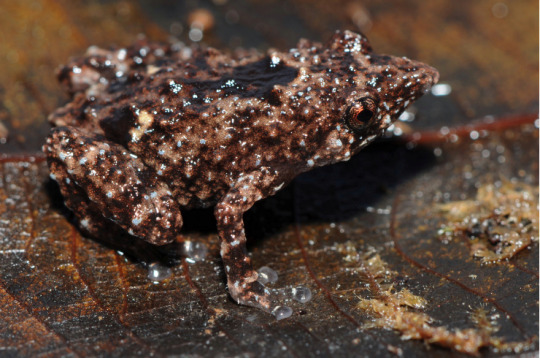
Choerophryne proboscidea [src]
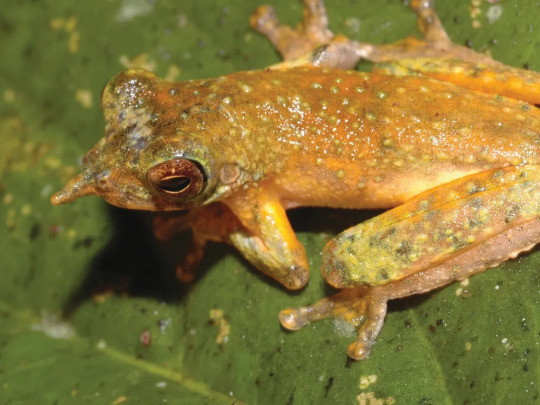
Litoria pinocchio [src]
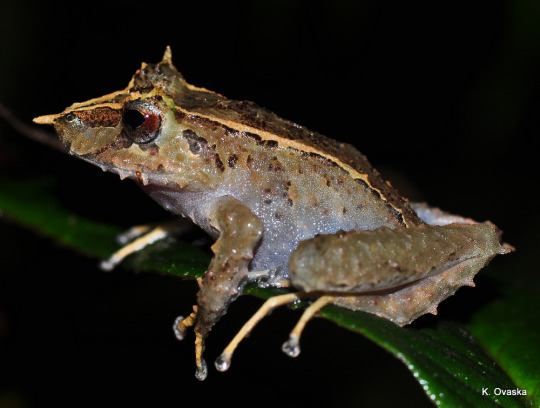
Pristimantis appendiculatus [src]

Litoria mucro [src]
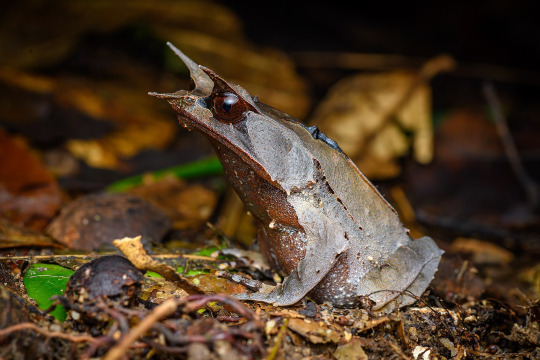
Megophrys nasuta [src]
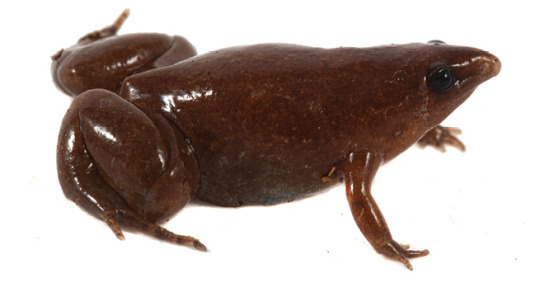
Synapturanus danta [src]

Scinax garbei [src]
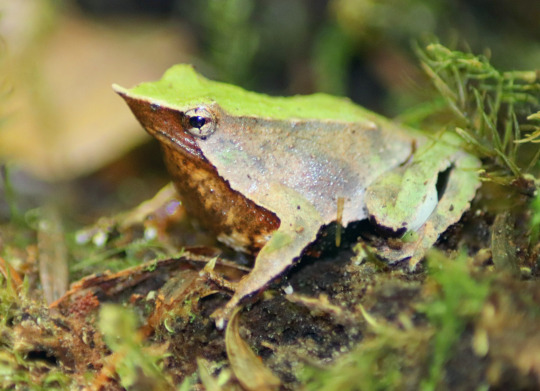
Rhinoderma darwinii [src]

Hemisus marmoratus [src]

Nasikabatrachus sahyadrensis [src]

Rhinella lilyrodriguezae [src]

Triprion petasatus [src]

Hemiphractus proboscideus [src]
Need I go on?
#frogs#frog#snoot#snoots#animals#zoology#biology#wildlife#nature#Big Nose Energy#science#what is the snoot even FOR#like#so many different frogs have evolved snoots#some have clearly done so for defense#and some for digging#but the rest?#what a weird form of camouflage#gosh frogs are so cool#I think very few people#even among professional batrachologists#have a comprehensive overview of just how diverse frogs are#always stunning how often the same kinds of traits have evolved independently#it's like there's a pre-existing set of frog pieces that you can Build a Frog out of#and very few have Shiny Unique pieces#although some have unique combo bonus +2#hold the phone that is a good idea for a paper right there#please nobody steal that
1K notes
·
View notes
Text

Sumaco Horned Treefrog (Hemiphractus proboscideus), family Hemiphractidae, Loreto, Peru. photographs by Matt Jeppson
0 notes
Text
These spiky frog skulls look more like dinosaur fossils
Some frogs, like the Anotheca spinosa, developed spikes on their skull to possibly keep away predators. (Edward Stanley/)
Some frogs love the water; some prefer dry land. Some are colored to stick out, some to blend in. There are nearly 5,000 different species of frogs hopping, croaking, and swimming across the Earth of all different shapes and sizes. But one thing that unites most of them is a smooth, simple skull shape, giving them the classic froggy face we’ve all come to recognize.
Yet some frogs have evolved skulls that look more like crazy dinosaur fossils than your average Kermit. A process called hyperossification allows extra layers of bone to grow on parts of their skulls, creating anything from grooves or ridges to bony spikes or fangs.
Researchers have known for a long time about the select groups of amphibians that have these unusual skulls, but it wasn’t previously clear how these subgroups ended up this way. A new study in PNAS has found that not only one branch of frog has a crazy skull—the trait has evolved independently in different families of frogs over two dozen times.
“We found that the trait has evolved over 25 times in the frog tree of life, and is often associated with really extreme shaped skulls,” says author Daniel Paluh, a fourth-year Ph.D. student at the University of Florida. Paluh and his co-authors looked at x-ray scans of 158 species representing all 54 described frog families. They found that very different species shared similar eating or burrowing patterns as well as skull shapes.
The shovel-nosed frog, Australian turtle frog, and the Mexican burrowing toad aren’t close cousins at all and aren’t likely to be spotted hanging out close to each other on the globe. Yet, all three of these frogs have tall skulls with a pointed snout, Paluh says.
While these three funky-looking critters call different continents home, they are all burrowing specialists, and spend a lot of time underground hunting ants and termites, he says.
Hyperossification also appears for species that are voracious predators, like Pacman frogs, African bullfrogs, or Soloman Island frogs. These fierce hunters aren’t known to have much in common evolution-wise. Still, they all have a similarly weird skull with bony fangs that allows them to snag pretty large prey, including other vertebrates. Frogs aren’t known to have teeth on their lower jaw, so these fangs come in handy when it comes to swallowing a tasty bird, mammal or reptile for dinner.
The horned Hemiphractus scutatus uses it's wide gape and fangs to prey on other vertebrates. (Edward Stanley/)
“There are a subset of these vertebrate predators that have evolved these bony fangs on the lower jaw, which aren’t true teeth. They are just bony projections,” Paluh says. Other frogs, like the Mexican spike frog, have developed pointy skull spines which can act as a defense mechanism against predators.
In previous work done in the 90s by Harvard herpetologist James Hanken, hyperossification was previously predicted to be associated with miniaturization. But this new study has found the skull shaping trait in teensy frogs, all the way up to the Beezlebufo (a.k.a. the devil frog), the biggest frog ever known. This Cretaceous-era croaker had a bite force strong enough to chow down on small dinosaurs.
While the discovery of hyperossification and crazy skulls aren’t new, what is groundbreaking is making the associations between behavior and shared traits across far away species, both geographically and evolutionarily, Hanken says.
“They’ve been able to assess all of these traits across a lot of these species and finally assess correlations,” Hanken says.
For University of Berkeley amphibian expert David Wake, the most interesting bit is how many ways different frogs can use their skulls, be it for protection, burrowing, or snacking. “The diversity of these skulls is really quite amazing,” he says.
But looking at skulls is the easy part. The data we need next comes from actually watching the frogs go about their lives to better understand their ecology and evolution. Instead of just looking at what’s inside their head, biologists need to get a better look at how they use them out in the wild.
0 notes
Text
อันดับกบ
มีรูปร่างโดยรวม คือ เป็นสัตว์ไม่มีหาง เพราะกระดูกสันหลังส่วนหางได้เชื่อมรวมเป็นชิ้นเดียวยาวกระดูกสันหลังลดจำนวนลงมาจากสัตว์ในยุคก่อนประวัติศาสตร์เพราะมีไม่เกิน 9 ปล้อง มีขาหลังยาวจากการยืดของกระดูกทิเบียกับกระดูกฟิบูลาและของกระดูกแ���สทรากากัสกับกระดูกแคลลาเนียม โดยมีบางส่วนเชื่อมติดกันและเต็มไปด้วยมัดกล้ามเนื้อแข็งแรง เพื่อใช้ในการกระโดด มีส่วนหัวที่ใหญ่และแบนราบ ปากกว้างมาก
กบในระยะวัยอ่อนจะมีลักษณะแตกต่างไปจากตัวเต็มวัยอย่างชัดเจน เรียกว่า "ลูกอ๊อด"[2] โดยมีรูปร่างคล้ายปลา มีส่วนหัวที่โตมาก มีหาง ไม่มีฟัน โดยในส่วนโครงสร้างของจะงอยปากเป็นสารประกอบเคอราติน หายใจด้วยเหงือกเหมือนซาลาแมนเดอร์ พฤติกรรมการกินอาหารของลูกอ๊อดจะแตกต่างกันไป โดยอาจจะกินแบบกรองกิน หรือกินพืช และกินสัตว์ เมื่อเปลี่ยนรูปร่างเป็นตัวเต็มวัยจึงเปลี่ยนลักษณะการกิน รวมทั้งเปลี่ยนสภาพโครงสร้างของอวัยวะระบบย่อยอาหารรวมทั้งระบบอวัยวะอย่างอื่น ซึ่งการเปลี่ยนรูปร่างของกบนั้นจะต่างจากซาลาแมนเดอร์เป็นอย่างมาก
การสืบพันธุ์ของกบนั้นมีหลากหลายมาก ส่วนการปฏิสนธิจะเกิดขึ้นภายนอกตัว โดยทั้ง 2 เพศมีพฤติกรรมกอดรัดกันระหว่างผสมพันธุ์ กบส่วนมากจะป้องกันดูแลไข่ นอกจากบางชนิดเท่านั้นที่เก็บไข่ไว้บนหลัง ที่ขา ในถุงบนหลัง หรือในช่องท้อง หรือบางชนิดวางไข่ติดไว้กับพืชน้ำที่เติบโตในน้ำหรือบนกิ่งไม้ของต้นไม้เหนือน้ำและเฝ้าไข่ไว้ การปฏิสนธิที่เกิดขึ้นภายในตัวจะพบเพียงกับกบบางชนิดเท่านั้น เช่น Ascaphus truei เป็นต้น และการเจริญของเอมบริโอภายในไข่และวัยอ่อนที่ออกจากไข่มีรูปร่างเป็นเหมือนตัวเต็มวัยเลย โดยไม่ผ่านขั้นการเป็นลูกอ๊อดเกิดขึ้นกับหลายสกุลในหลายวงศ์ อาทิ สกุล HemiphractusและStefania เป็นต้น
0 notes